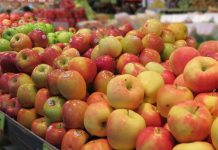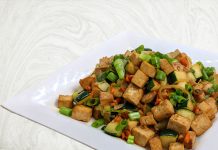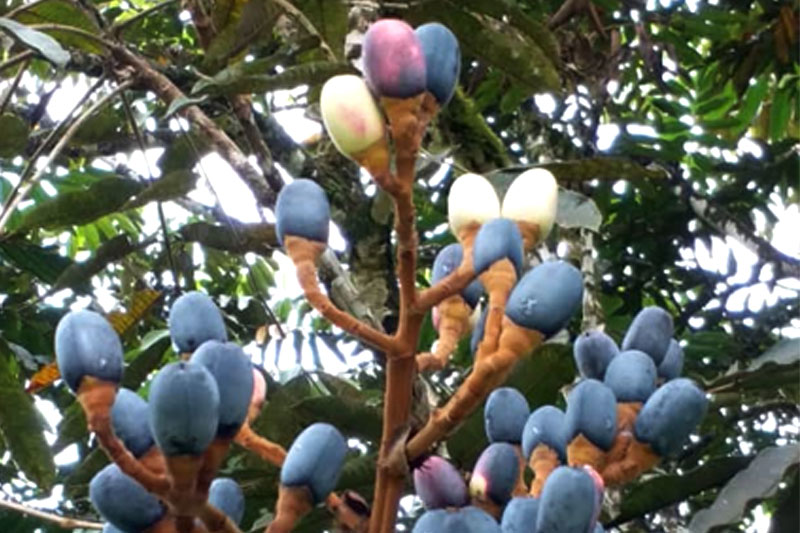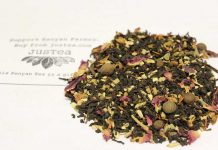The North American native berry and holiday staple holds a powerhouse of phytonutrients with numerous health benefits
Every fall from mid-September through October, cranberry fields colour Metro Vancouver’s landscape with shades of red. In rural Pitt Meadows, Maple Ridge, Abbotsford, Langley, and Richmond, farmers work tirelessly harvesting berries in the flooded bogs and marshes.
Cranberries are a North American holiday staple enjoyed at Thanksgiving and Christmas. The savoury turkey topped with the sweet-tartness of cranberry sauce trigger a sense of euphoria for the taste buds.
That could why some may argue that you can’t have turkey without cranberry sauce. It takes about 200 cranberries to produce one can of sauce, according to foodreference.com.
Health experts label the cranberry a superfood
Its phytonutrients (natural plant chemicals) are packed with disease-fighting antioxidants. Cranberries have been a source for food and medicine for North America’s indigenous people since time immemorial.
Native Americans mix crushed cranberries with dried deer meat and melted fat to make pemmican – a primeval protein bar which can last from one to five years without refrigeration. The berry’s juice was used in poultices to extract poison from arrow wounds.
Early traders, sailors and settlers learned of the berry from the indigenous people. They ate cranberries on their long voyages to ward off scurvy. The Pilgrim Fathers named the cranberry “craneberry”- after its’ small, pink flowers which resembles a Sandhill crane’s head and bill. The name evolved to cranberry over time.

Harvesting of Cranberries
Listen to executive director Mike Wallis of BC Cranberry Growers’ Association on how cranberries are harvested.
A good quality, ripe cranberry bounces. The small air chambers inside the berry cause it to bounce and float in water, said executive director Mike Wallis of BC Cranberry Growers’ Association. Wallis added that flooding the fields are a quicker harvesting method than dry picking.
Wet harvested cranberries are more perishable than dry-picked ones. They are processed to juices, jams, jellied sauces and sweetened dried cranberries, and account for 95 per cent of berries cultivated. The dry-picked berries which make up the remaining 5 per cent are sold fresh.
Wallis noted that Quebec, British Columbia, New Brunswick, Nova Scotia and Prince Edward Island are Canada’s main producing provinces. America’s leading cranberry producing states are Wisconsin and Massachusetts. United States together with Canada and Chile produced over 98 percent of the world’s cranberries in 2016.
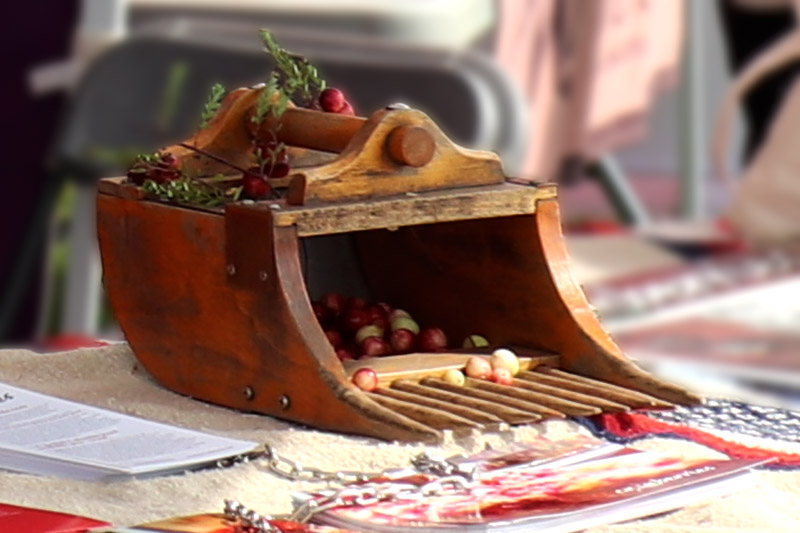
The cranberry plant is a low-growing evergreen shrub of the Vaccinium genus. The two main cultivated species are the European cranberry (Vaccinium oxycoccos) and the American cranberry (Vaccinium macrocarpon) whose size doubles that of the European fruit. The native North American perennial vine thrives in moist, sandy terrain.
Bioactive Compounds
Small and tart-tasting, fresh cranberry is low in calories and sugar, rich in vitamins (A, C, B1, B2, B6 and E) and fibre. The superfood contains a complex and rich source of phenolic phytonutrients including phenolic acids; flavonoids: anthocyanins, flavonols and flavan-3-ol (proanthocyanidins or PACs); and terpenes.
Anthocyanins, the water-soluble pigments give cranberry its red colour. The berry seeds contain omega 3, 6 and 9 essential fatty acids, vitamin E, plant sterols, phospholipids and flavonoids. Researchers found that PACs the most abundant flavonoids in red cranberry fruits possess anti-microbial, anti-adhesion, antioxidant, and anti-inflammatory properties.
Flavonoids, a class of polyphenols are plant-based micronutrients loaded with powerful antioxidants that promote wellness, prevent and/or lower risk of infections, cancer, digestive issues and cardiovascular diseases.

Health Benefits
Immune system, skin and brain: Cranberries are loaded with vitamins and antioxidants that help boost immunity and improve skin and brain health.
Glycemic control: Impact starch digestion in the digestive tract, and delay glucose release into the bloodstream. This may help reduce blood sugar spikes and lower the side effects of diabetes.
Cancer: Antioxidants neutralize harmful free radicals which have potential effects on cancer prevention and progression. A 2016 study on animal models supported the effectiveness of cranberries as inhibitors of seven different cancers: bladder, colon, esophageal, brain, lymphoma, prostate and stomach. Conclusive results are yet to be proven in human studies. Nonetheless, the berries potential as cancer inhibitors look promising.
Cardiovascular health: Studies suggests that bioactive compounds in cranberries can help optimize blood cholesterol levels by reducing oxidation of LDL (bad) cholesterol, increasing HDL (good) cholesterol, improving the flexibility of arteries, and lower inflammation.
Digestive health: Inhibit the colonization of Helcobacter pylori bacteria in the stomach, and lower risks of intestinal inflammation which can cause stomach ulcers.
Gum diseases: The flavonoid PACs in cranberry fruits may be potential therapeutic agents for the prevention and management of periodontitis, according to a 2012 study.
Urinary tract infections: Cranberry juice cannot treat urinary tract infections (UTIs). Research only suggests that cranberry consumption may protect UTI development or lower re-occurrence. Pure, unsweetened cranberry juice and extract, or supplements may help prevent repeated UTIs in women, but the benefit is small cited HealthLinkBC.
It takes about 4,500 cranberries to produce just one gallon of cranberry juice, cited wisconsinhistory.org
Side Effects and Precautions
- Drinking too much juice can cause mild stomach upset and diarrhea
- Aspirin allergy: The fruit contains high salicylic acid, a key ingredient in aspirin. Minimize consumption if you are allergic to aspirin.
- Diabetes: Keep to non-sweetened or artificially sweetened juices to avoid sugar spikes.
- Stomach lining inflammation: Cranberry juice may increase how much vitamin B12 the body can absorb for those with atrophic gastritis and low stomach acid.
- Kidney stones: Cranberry juice concentrates and extracts contain significant amounts of oxalate. Minimize consumption if you have a history of kidney stones.
- Medications: Check with your doctor to make sure cranberry consumption does not interact with your prescribed medications.
How to Maximize Cranberry Phytonutrients
To get the most benefit from cranberry bioactive compounds, use juice concentrate and cranberry products that has no added sugar. Fresh cranberries provide the most phytonutrients. For a more palatable taste, add cranberries to your smoothie with other naturally sweetened fruits.
Fresh cranberry consists almost 90 percent water. Hence, frozen berries should not be thawed as it causes the fruit to break down turning into soft berries.

